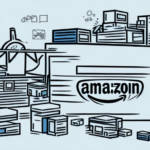Understanding FBA Fees: What You Need to Know Before Selling on Amazon
If you're planning to sell on Amazon, utilizing Fulfillment by Amazon (FBA) can significantly streamline your business operations. FBA allows Amazon sellers to store and ship their products through Amazon's comprehensive fulfillment centers. However, it's crucial to understand the associated FBA fees to effectively manage your costs and maximize your profits. This guide delves into what FBA entails, its benefits, the various fees involved, and strategies to optimize your FBA usage.
What is FBA and How Does It Work?
FBA is a service offered by Amazon that enables sellers to store their products in Amazon's fulfillment centers. Amazon handles the storage, packaging, and shipping of products directly to customers. Additionally, FBA provides customers with benefits such as Amazon Prime eligibility, free shipping, and reliable delivery times, enhancing the overall shopping experience.
FBA Process Overview
- Send Your Inventory: Ship your products to Amazon's fulfillment centers.
- Storage: Amazon stores your products securely until they are ordered.
- Order Handling: When a customer places an order, Amazon retrieves the product from storage, packages it, and ships it to the customer.
- Customer Service: Amazon provides customer service and handles returns on your behalf.
Benefits of Using FBA
FBA offers numerous advantages that can enhance your Amazon selling experience:
1. Storage and Shipping Efficiency
By leveraging Amazon's vast network of fulfillment centers, you eliminate the need for personal storage space and reduce the logistical burden of shipping orders manually. This efficiency allows you to scale your business without worrying about inventory management.
2. Enhanced Customer Trust
Products fulfilled by Amazon often enjoy higher trust levels among customers due to Amazon's reputation for reliable service. This can lead to increased sales and better customer satisfaction.
3. Amazon Prime Eligibility
FBA products are automatically eligible for Amazon Prime, providing customers with faster shipping options. This can boost your product's visibility and attractiveness to Prime members.
4. Improved Search Rankings
Amazon's algorithm favors products with better shipping times and higher customer satisfaction. Using FBA can enhance your product rankings in search results, making them more discoverable to potential buyers.
Understanding Amazon FBA Fees
FBA fees can significantly impact your profit margins. It's essential to comprehend the different types of fees associated with FBA to make informed financial decisions.
1. Storage Fees
Storage fees are charged based on the volume (measured in cubic feet) your inventory occupies in Amazon's fulfillment centers. These fees vary seasonally, with higher rates during peak months like October through December.
- Standard-size items: $0.75 per cubic foot (Jan - Sep), $2.40 per cubic foot (Oct - Dec)
- Oversize items: $0.48 per cubic foot (Jan - Sep), $1.20 per cubic foot (Oct - Dec)
Learn more about FBA storage fees.
2. Fulfillment Fees
Fulfillment fees cover the cost of picking, packing, and shipping your orders. These fees are based on the size and weight of your products.
- Standard-size items: Starting at $2.50 per unit
- Oversize items: Starting at $8.26 per unit
Refer to Amazon's FBA fee structure for detailed pricing.
3. Referral Fees
Amazon charges a referral fee for each item sold, typically a percentage of the product's sale price. This percentage varies by product category, usually ranging between 6% and 45%.
- Most categories: 15%
- Books: 15%
- Electronics: 8%
Check the specific referral fee percentages here.
4. Long-Term Storage Fees
Products stored in Amazon's fulfillment centers for more than 365 days incur long-term storage fees. These fees are designed to encourage sellers to manage their inventory effectively.
- $6.90 per cubic foot or $0.15 per unit, whichever is greater.
Monitor your inventory to avoid unexpected long-term storage charges.
Strategies to Minimize FBA Fees and Maximize Profits
Implementing effective strategies can help you reduce FBA fees and enhance your profitability:
1. Optimize Inventory Management
Maintain optimal inventory levels to prevent excessive storage fees. Utilize Amazon's Inventory Performance Index (IPI) to monitor and manage your stock efficiently.
2. Utilize FBA Fee Calculators
Amazon offers an FBA Revenue Calculator that helps estimate your fees and profit margins, allowing you to price your products strategically.
3. Bundle Products
Creating product bundles can reduce per-unit fulfillment fees by combining multiple items into a single package, thereby lowering overall shipping costs.
4. Leverage Multi-Channel Fulfillment
Amazon's Multi-Channel Fulfillment (MCF) service allows you to use FBA to fulfill orders from other sales channels, optimizing your shipping operations across platforms.
5. Negotiate with Amazon
High-volume sellers may have the opportunity to negotiate lower FBA fees by demonstrating substantial sales and consistent performance. Contact Amazon Seller Support to discuss potential fee reductions.
Comparing FBA with Other Fulfillment Options
While FBA offers numerous benefits, it's essential to consider alternative fulfillment methods to determine the best fit for your business:
1. Fulfilled by Merchant (FBM)
With FBM, sellers manage storage, packaging, and shipping themselves. This option can be cost-effective for low-volume sellers or products that don't meet FBA requirements.
2. Third-Party Logistics Providers (3PLs)
3PLs handle warehousing, packaging, and shipping, offering flexibility and scalability. They can be a viable alternative for sellers seeking more control over their fulfillment processes.
Explore reputable 3PL services like ShipBob or Shippo.
3. Dropshipping
Dropshipping involves partnering with suppliers who manage inventory and shipping on your behalf. This method reduces the need for upfront inventory investment but may offer less control over order fulfillment.
Consider platforms like Shopify Dropshipping.
Managing and Monitoring Your FBA Fees
Effective management of FBA fees requires regular monitoring and strategic adjustments:
1. Use Amazon's Reporting Tools
Amazon provides various reports, such as the Fee Preview Report and Inventory Health Report, to help you track and analyze your fees.
2. Regularly Review Your Pricing Strategy
Ensure your product prices account for all FBA fees to maintain healthy profit margins. Adjust pricing as necessary based on fee changes and market conditions.
3. Optimize Product Listings
Enhanced product listings with high-quality images, detailed descriptions, and relevant keywords can boost sales and reduce the time items spend in storage, thereby lowering fees.
4. Implement Inventory Turnover Strategies
Focus on selling products quickly to minimize long-term storage fees. Techniques include running promotions, discounts, and utilizing Amazon's advertising tools to increase product visibility.
The Future of FBA: Trends and Predictions
FBA continues to evolve, influenced by technological advancements and changing market dynamics. Key trends to watch include:
1. Increased Automation
Amazon is likely to continue integrating automation and AI to enhance fulfillment efficiency, reduce errors, and lower operational costs.
2. Expansion into Global Markets
Amazon's fulfillment network is expanding globally, providing sellers with opportunities to reach new international markets more effectively.
3. Emphasis on Sustainability
There is a growing focus on sustainable practices within Amazon's fulfillment centers, including eco-friendly packaging and reduced carbon footprints.
4. Enhanced Seller Support Tools
Amazon is expected to introduce more advanced tools and resources to help sellers manage their FBA operations, including better analytics and inventory management solutions.
Conclusion: Optimizing Your Amazon FBA Strategy
Fulfillment by Amazon offers a robust solution for managing logistics and scaling your business. By thoroughly understanding FBA fees and implementing strategies to minimize costs, you can maximize your profitability and enhance your overall Amazon selling experience. Stay informed about the latest trends and continuously optimize your operations to maintain a competitive edge in the dynamic Amazon marketplace.






















